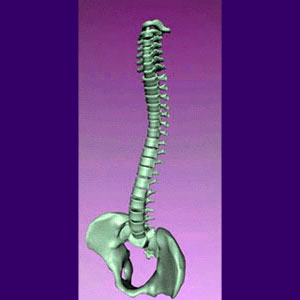
Spinal degeneration is a colloquial term for the typical aging processes which affect the vertebral column, including degenerative disc disease and arthritis in the spine. It is difficult to say which symptoms, if any, really come from normal degeneration of the spinal structures, since so many people (almost all of us) demonstrate the physical signs, yet do not experience any significant or lasting pain.
However, there are many care providers in the medical professions who use typical degeneration as a scapegoat on which to blame unexplained back pain, often despite any evidence of a pathological process.
Diagnostic guidelines set forth by medical associations caution doctors not to assume any structural degenerative process is inherently symptomatic. This is because clinical research shows little, if any, definitive correlation between typical spinal aging and the incidence of back, neck or sciatica pain.
This narrative propagates vital truths about spinal aging that are certainly not part of mainstream medical treatment for back or neck pain.
Symptoms of Spinal Degeneration
As previously mentioned, typical degeneration should not enact any particular symptoms. Pain is not inherent to spinal aging and most people will not demonstrate ill effects from these processes. However, what about patients who demonstrate extreme and atypical degeneration in regions of the spine? In some cases, these conditions may also be asymptomatic. However, in other cases, some patients may endure discomfort and/or possible neurological dysfunction. Some patients may suffer abnormal degenerative conditions which may cause:
Pain in the back, neck or limbs
Muscle tingling, numbness or weakness
Restricted range of motion
Symptomatic relief with certain movements or positions
Unfortunately, these are the same symptoms which can also be generated by a variety of other structural causative processes in the spine, in the surrounding musculature and in other areas of the anatomy.
These can also be symptoms generated completely by nonstructural causations, such as regional ischemia or disease processes. Therefore, tracing symptoms to spinal deterioration may be difficult to do even in the worst cases of seemingly problematic spinal issues.
Vertebral Column Degeneration
There is a good chance that you have significant degeneration in parts of your spine. A high percentage of the adult population has drastic degeneration in the area of L4, L5 and S1. Many of us also have moderate degeneration from C5 to T1. In fact, it is virtually universal for adults to have at least one significant region of degeneration somewhere in the backbone.
It is absolutely crucial to know that spinal degeneration will continue throughout life. The elderly have it worse than the middle aged demographic, but seniors also have far fewer chronic back pain complaints. There are some structural explanations for this to occur. In fact, I detail some of them in my disc degeneration article.
If degeneration itself was responsible for pain, we would see an increase in the number of complaints, and the severity of each complaint, as people got progressively older. However, what we find is exactly the opposite. After age 60, the incidence of chronic back ache decreases sharply and the average intensity of symptoms in patients who do have back pain is also decreased. This makes no sense from the Cartesian point of view, but makes perfect sense from the mindbody point of view.
It just goes to prove that during the ages of responsibility, chronic pain is likely to be the result of huge stresses placed on the patient. After the burden of responsibility is lifted at a given stage of life, stress is reduced and pain diminishes. This is a truth that doctors must learn to appreciate, instead of simply looking for the signs of spinal degeneration and using these as crutches to explain otherwise idiopathic symptoms.




